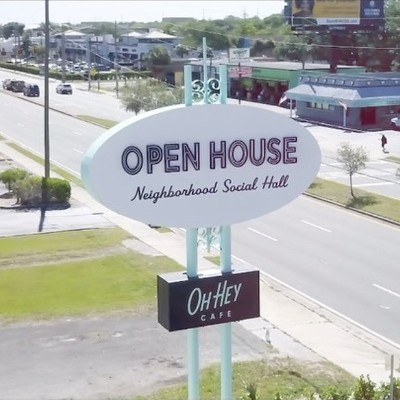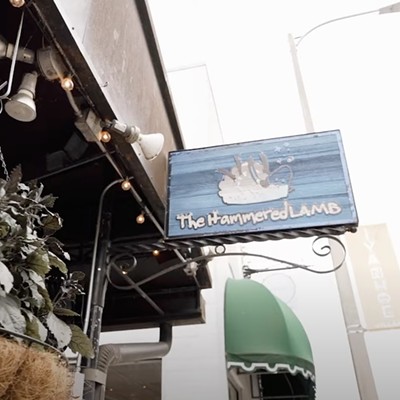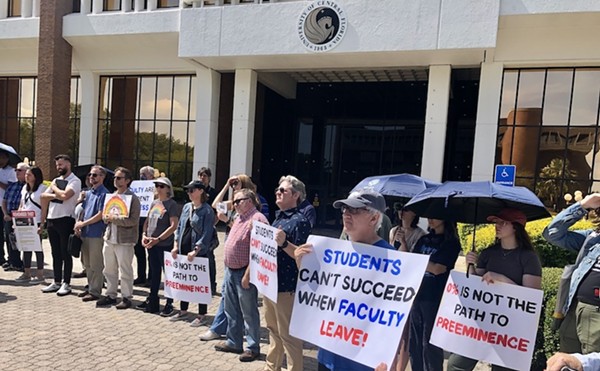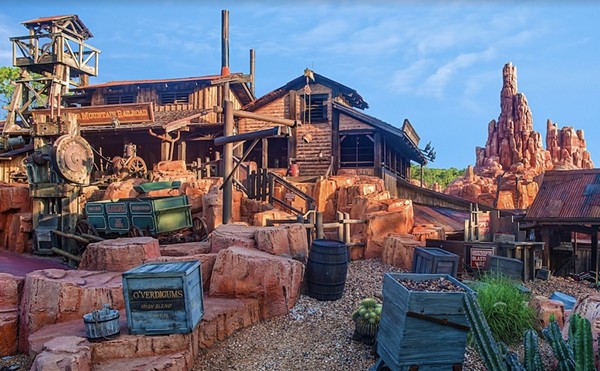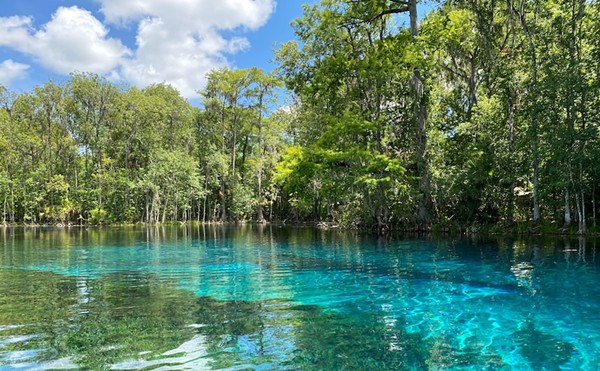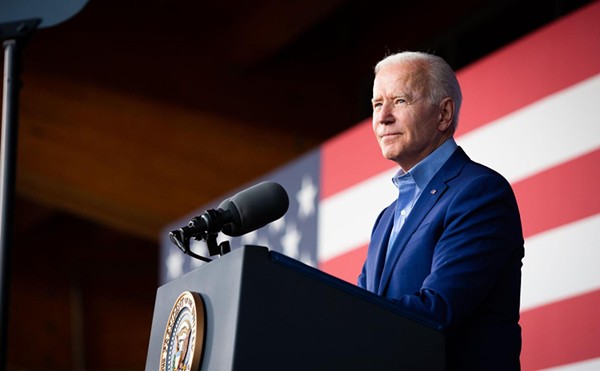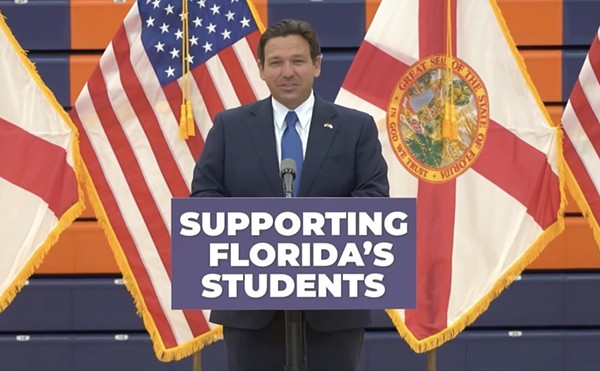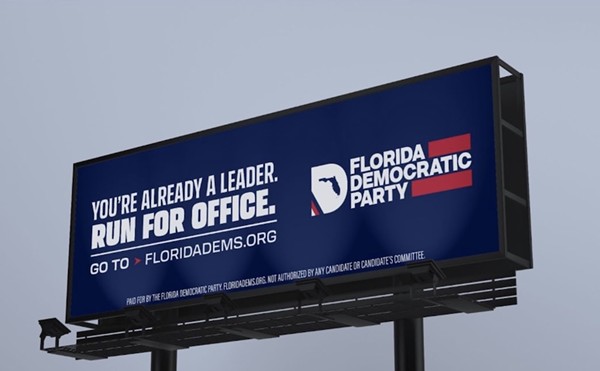When people talk about dance music in America, the cities of Detroit, Chicago and New York are often the first to fall from their lips. But historically, Orlando has been nearly as important in the development of the sound. American progressive house, breaks and drum & bass are examples of movements cultivated locally which spread across the country, spawned by homegrown artists such as Chris Fortier, DJ Icey, Kimball Collins, Dave Cannalte and AK1200.
But a scene, like the genre itself, goes through cycles of growth and maturation similar to those of an ecosystem. Introduce predators (such as money-hungry trend-hoppers) or limit the sunlight (or moonlight, as in the case of changing bar closing times) and you can have a negative impact on the environment. Similarly, a forest fire that wipes out a vibrant tree canopy also offers new opportunity for expansion, and those that survive such natural disasters grow hardier as a result.
In the wake of the boom-bust cycle of the American electronic music movement after its hype as the "next big thing" at the turn of the millennium, the entire scene deflated, only recently beginning to stabilize attendance and record sales. While globetrotting European DJs such as Paul Oakenfold, Paul Van Dyk, John Digweed and DJ Tiësto continue to draw audiences in the thousands, no one has been immune to the hit in album sales, and the huge clubs have suffered, as have American artists.
The aforementioned Europeans have benefited from high name recognition and the perception among casual enthusiasts that the scene overseas is more vibrant and groundbreaking, an expression of the old cliché that the grass always seems greener someplace else. But far from actually having better DJs or better producers, the flourishing European scene is the product of having a more compliant music press and smaller countries where trends can build more quickly than is possible in America's great expanse.
"The difference is that we've not had a great music press in America that supports electronic music. We've not had a record industry that's heavily supported things. You have to sell a lot more records to achieve things, and the distribution is a lot more difficult," says New Yorker Fortier, a world-renowned DJ/producer who got his start at early-'90s pioneering Orlando club Aahz. "Those guys are the top DJs in their country and they've got this great infrastructure – management and agencies and record companies going, 'OK, let's go to America,' and they come with this team, and they say, 'We've already been successful here,' and because of that they have the money to hire great PR people.
"If we could've afforded these big publicists at the time, it would've been a good idea. But thinking about getting someone to sell us is not sort of a typical thing either. We were still thinking about doing our thing and being known for the music we play and not because we've got somebody telling people about us," he says.
The irony, of course, is that the U.K.'s source material came from America.
"American DJs have always been revered overseas. And American DJs are responsible for the scene overseas, though you'll talk to some people here and they won't think so," says Orlando resident Michael Donaldson, aka Q-Burns Abstract Message. "Basically what spurred on the acid house movement in England was Detroit techno and New York house, which created the whole scene over there. But here in the late '90s, it was always the British DJs that were in demand and who were the hip DJs."
At the height of the electronic craze, clubs were able to pack thousands in, even on weekdays. But when the bottom fell out in 2001, the clubs were caught scrambling, trying to fill their floors and justify the inflated asking prices for big-name DJs. International DJs, on the strength of their reputations alone, have become the only ones who can draw in the casual fans for whom dance music is no longer a way of life. But even those artists are being forced to do more weekdays than weekends.
"A lot of clubs are doing their nights on Wednesday instead of the weekends because `DJs ask` half-price in the middle of the week instead of the weekend," says Alex Steiner, owner of local record store the Drop Shop. "But the thing is, everyone has to work, so not that many people come out, and then the club owners and promoters that are even paying these half-fees for the midweek aren't happy with the turnouts. It's sad that some of the bigger clubs have had to conform to playing hip-hop and Top 40 because if the people that are underground aren't paying, they have to pay their rent somehow; they have to get some people in."
It's a pain that's being felt by clubs across the nation. In New York, popular venues such as Filter 14 and Pangea have recently shuttered their doors, and in Los Angeles the club Spundae is moving to a smaller venue, unable to regularly fill its 1,800-person capacity.
"It's an entire sort of market shift," says writer Dennis Romero, who has covered the scene in LA CityBeat and The Los Angeles Times since 1992. "The market is starting to thin out, and you're starting to separate the men from the boys as far as people who are really dedicated to the music – listening to it, buying it and going to clubs. In the late '90s and around the millennium, it was the trendy thing to do and there were a lot of people involved who weren't necessarily huge fans of dance music, but who went to clubs and bought a few records because it was the trendy thing to do. And those people are gone now."
It wasn't always that way. Orlando had one of America's most thriving scenes in the '90s. Beginning with DJ Icey and his club Spit, then Aahz with Collins and Cannalte, and Icey's later club, The Edge, the local scene boomed. It produced artists like Fortier, Sean Cusick and Jimmy Van M. Around that other artists developed, such as Q-Burns and Rob Slac.
"Orlando had been growing every year, getting bigger with more and more DJs, and more and more guys starting to make tracks," says Fortier. "In the mid-'90s, Orlando was a huge epicenter for progressive house. That whole scene broke here, well before anywhere else except for, obviously, the U.K. That was the sound that people would consider the Orlando sound. And obviously when Icey moved more into doing his breaks exclusively in '93 to '94, all of a sudden that exploded for him and created a whole movement.
"It was something people responded to," Fortier continues. "Maybe it was an easier sound that people could identify with more than our music that was starting to change into a little bit more involved and getting more details. Eventually the breakbeat scene became a big Florida thing, but there were tons of other people making other stuff as well, other progressive house stuff."
But within a couple of years things started to change, just as electronic music was taking off nationally. First there was the crackdown on late-night dancing, targeting after-hours clubs and enforcing a 3 a.m. closing time. That was followed by 2002's RAVE (Reducing Americans' Vulnerability to Ecstasy) Act, which targeted the dance scene's drug subculture.
"Back then it was really two different crowds," recalls Steiner. "You had your drinking crowd that came in from 10 p.m. to 2 a.m., and after the alcohol was gone they'd leave, and the late-night clubs had all the people who were serving those people that wanted to do something after they got off work. So that's where the late night came through and usually that came out as a better vibe because it wasn't drunk people that were hitting on your girlfriend. People weren't obnoxious."
"Most of it had to do with the type of music that was played late night – those people liked that kind of music as opposed to the stuff they would hear early," says DJ Baby Anne, who credits DJ Icey with getting her started in the scene. "I think people made time to be there."
Even though the laws began to chase out Orlando's huge hospitality industry late-night crowd, the scene continued to draw people. Eventually, it became a victim of its own early success. In 1998, WPYO-FM (95.3) became "The Party," an all-dance-music station with a decidedly accessible playlist; it was seen by many as the death knell for a scene that had gotten too big.
"In a way it got more people into so-called dance, but it was kind of bad because while it brought more people to the clubs, that's what `the station's listeners` then considered dance music," says Cannalte, one of the original Aahz DJs. "When `the clubs` played anything that was truly underground, `the crowds` didn't like it. So it was a double-edged sword. It was good on one hand, but it had its faults."
When the bubble burst in 2001, everyone was hit hard. Clubs couldn't sustain. Album sales dropped as much as 50 percent. Artists were no longer able to book the kind of guarantees they'd grown accustomed to. And, tellingly, by early 2004 "The Party" turned into a hip-hop station. All thanks to the shrinking market for dance music.
But while the money's no longer there, Orlando still boasts a wealth of talent, which poses another problem.
"There are a lot of DJs that are starting to find their own in this town. It makes it hard for people that have been doing a lot of work. I've been playing out for seven, eight years now, and it's nice to have a paycheck, but all these other guys kind of take away from that because they're willing to play for free," says Slac, who just returned from a successful set of European dates. "It kind of depresses you a bit that the money isn't there as it used to be."
The problem is the lack of larger clubs with decent paydays for the better-known local DJs who've earned their bigger names to play in.
"The challenge we have in Orlando is a venue challenge," says Q-Burns. "A couple of really choice venues just switched owners and there's sort of another transition thing going on, but what we don't have a lack of is really good DJs and really good people. There's so many good DJs in Orlando right now."
But these limitations can turn into a strength. For example, the retreat of dance music at bigger clubs has been a boon for smaller ones.
"I notice more of the underground events are going to the smaller bar-like venues, and more locals are having more of their chance in the spotlight at these venues," says a sanguine Steiner. "It's actually an opportunity for the underground to come up a bit and make more of an outcome, and to be able to come back with knowledge of what they've learned in the past to make sure they don't come across the same problems."
Plus the loss of the scene's hangers-on seems to have resulted in a better, more focused dance scene.
"People have gotten more open-minded now than they were in the past," says Q-Burns, whose latest album (Future Past Tense, a remix disc) was released Oct. 5 via his Eighth Dimension label. "And I think that's just because as the numbers have gone down, the people that show up at the events, the money coming through the scene, and the major-label influence has been weeded out a bit. Your crowds tend to be there more for the music than for other reasons."
And like any system that's pruned back, dance music may grow back stronger.
"I don't think it will ever die," says Romero. "But what I think is happening is that a lot of new people got into the scene, they got into the Ecstasy, they started doing the drugs every weekend, they got burnt out on the drugs, they stopped going out, they stopped buying the music. Then the people who are left over are people like me who like the music regardless of the drugs, and regardless of having to stay out until 8 a.m. And that's good for the industry because when those people remain – that's a solid foundation for the market. They're educated, they have jobs, and they buy a lot of music and that's the kind of market you want anyway."
The future's still cloudy for Orlando. Bar closings may move back an hour, which could draw more of the hospitality crowd, and there are small clubs – Knock Knock, AKA Lounge, Alpha Bar and Thee Grotto – that are doing good nights. Plus, there are always Jimmy Joslin's "Service Industry Nights" at House of Blues on Sundays, which sometimes feature well-known spinners as guests. The smaller clubs are offering opportunities to the thriving underground DJs who lack the name recognition of a Q-Burns, Icey or Collins, providing another generation their chance to start another wave. For the moment, the breakers are small, but there's hope that lightning could strike twice, if they figure out how to bottle and market it.


